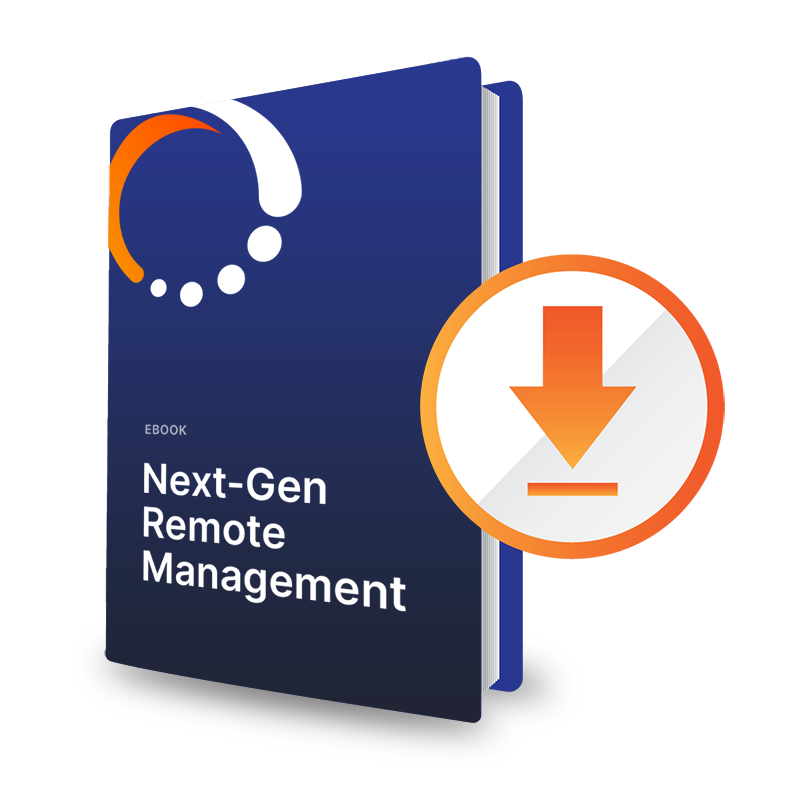Navigating the RMM Software Landscape: Features, Costs, and Selection Criteria
Explore the essentials of Remote Monitoring & Management (RMM) to understand key features, build vs. buy, costs, and how to select the perfect RMM solution for your organization.

Remote Monitoring and Management (RMM) solutions are indispensable tools for Managed Service Providers (MSPs) and IT departments, enabling them to maintain the health and performance of IT infrastructure and Connected Products efficiently. The RMM landscape, however, is complex, with a broad spectrum of solutions designed to meet varying needs across different sectors. Understanding the key features, costs, and selection criteria is crucial for choosing the right RMM solution that aligns with your organizational goals.
The Distinct Worlds Of RMM: IT Infrastructure vs. Connected Products
IT INFRASTRUCTURE
RMM for IT infrastructure, traditionally the domain of IT organizations, focuses on the management and monitoring of servers, networks, laptops, desktops, and other IT assets across operating systems like Windows, macOS, and Linux. The market for these solutions is highly competitive, featuring numerous established players. These RMM tools offer out-of-the-box functionality, designed for quick deployment and immediate value, requiring minimal customization. They excel in automation, patch management, and endpoint management, reducing downtime and ensuring uptime for business operations.
CONNECTED PRODUCTS
Conversely, RMM for Connected Products, typically spearheaded by product management and development teams, addresses the unique challenges of monitoring and managing complex Connected Devices, including proprietary software and hardware components. This sector demands a flexible, configurable RMM platform capable of standardizing the remote management of diverse products. Such platforms must offer real-time monitoring, remote access, and the ability to manage mobile devices, thus diverging significantly from traditional IT-focused RMM solutions.
The Critical Decision: Build vs. Buy
Organizations with Connected Products face a pivotal decision: develop an in-house RMM solution or procure one from specialized providers. Crafting an RMM platform from scratch requires substantial investment in budget, expertise, and time and may result in a solution that struggles to evolve alongside the business. Conversely, partnering with a dedicated RMM provider can significantly accelerate your product roadmap, benefiting from the provider's focused experience in crafting state-of-the-art RMM solutions.
Key Features to Consider
Evaluating RMM software involves scrutinizing several critical features:
- Real-Time Monitoring and Alerts: Instantaneous feedback on system health and automated notifications for issue resolution.
- Remote Access and Management: The capability to access and manage endpoints and IT assets from a central location, streamlining service delivery and troubleshooting.
- Patch Management: Keeping systems updated and secure against vulnerabilities without disrupting end users.
- Customizable Dashboards and Reporting: Providing a single pane of glass for admins to view performance metrics and manage IT operations proactively.
- Integration with Professional Services Automation (PSA) and Help Desk Software: Facilitating streamlined workflows and efficient service delivery.
- Automation: A core capability that enables configuration management, lifecycle management, automated resolution, automated alerts and notifications, and automated integrations to other platforms that make up an organization's product ecosystem.
- Extensibility and Adaptability: For Connected Products, the RMM platform must be capable of evolving with the product, offering the ability to extend functionality and adapt to changing requirements over time.
- Pricing: Evaluating the return on investment is crucial, as the right RMM platform can significantly reduce maintenance tasks and downtime while improving efficiency.
Selection Criteria
When choosing an RMM solution, organizations should prioritize:
- Alignment with Business Needs: Whether for IT infrastructure or Connected Products, the solution must meet your specific requirements.
- Scalability: The RMM software should accommodate your organization's growth and the increasing complexity of IT service demands.
- Security Features: Robust endpoint security and cyber security measures are critical to protect against emerging security threats.
- Vendor Reputation and Support: A vendor known for reliability, continuous updates, and strong support will ensure long-term success.
- Ease of Use and Integration Capabilities: A user-friendly interface and seamless integrations with existing systems and apps enhance efficiency and streamline business operations.
Incorporating RMM tools into your IT management strategy offers numerous benefits, from improving uptime and endpoint security to automating routine IT tasks and enabling proactive maintenance. For MSPs and IT departments, selecting the right RMM solution is not just about monitoring software or managing IT assets—it's about transforming how IT services are delivered, enhancing endpoint management, and securing client networks and devices against an ever-evolving landscape of cyber threats.
Product Organizations and their associated technical support teams need to recognize RMM for Connected Products as a distinct category, requiring an RMM platform that can flexibly adapt to their product to enable effective monitoring and management in a standardized way. Attempting to apply a traditional RMM platform built for IT infrastructure to Connected Products could result in high customization and development costs. With careful consideration of features, costs, and selection criteria, organizations can choose an RMM platform that not only meets their current needs but also supports future growth and success, ensuring that their Connected Products are effectively monitored and managed.













